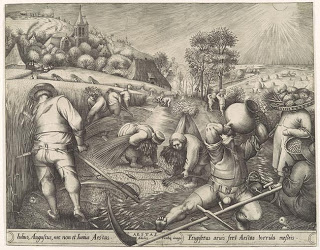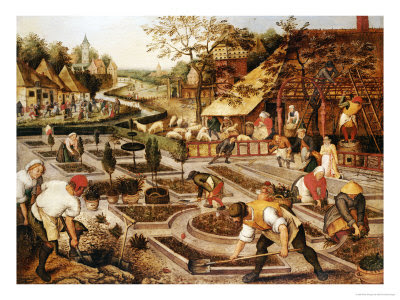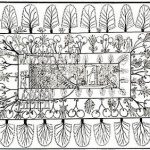
Chores in the field and garden were often divided between men and women by body strength, a strategy that has been passed down through time. It has its benefits, but truly is unnecessary. Most of the time the basest of garden chores were handed down to women; the weeding.
In English estates weeding was done almost exclusively by women. English records from Rotherhithe (Surrey) for 1354 list women as weeders. Women employed in the 16 century show rates of pay at 3 d a day to remove convolvulus, dandelions, charlock, cockles, dock, dodder, groundsel, thistles and nettles. The women were paid less than the men, but also seemed to hold less value than many of the garden implements they may have used: wheelbarrow 1 s3 d, a shovel 4 d, a ceramic watering pot 1 d. In France, La Quintinie, head gardener to Louis XIV, preferred hiring married men over single men, as their wives might be available for weeding or scraping of pots. In the Orient women weeded the rice paddies. I am sure countless of other examples can be found.
Queens and their kings, estate owners or nobles from any country in any time period had slaves or paid labourers to do the gardening for them. Often times women were part of the labour force. Wives of garden labourers, widows or other respectable women in need of extra income, peasants from the nearby village, would all be willing to work as weeders. It was monotonous, labourious work that was little regarded and poorly paid.

On the other end of the scale were the peasants who farmed the land of the wealthy. Woman, man and child were all involved in the success or failure of the farm. Weeding was part of the women’s work but not limited to it.
“Gentle huswyfes” of the low to middle class, took care of most aspects of the kitchen garden. If they were fortunate to have help, it was a young girl sent out to the garden to weed. If not, they did it themselves.
The question must be asked of times past, why was the woman not allowed to become head gardener? Why was she not allowed to take care of growing the fruit trees or design a garden? It was only by the 17th century that European upper class women were learning to read. It was only in the 18th century they could travel to distant lands to paint exotic plants, or learn the new and exciting field of botany. It was not until the 20th century that womens names were among those of garden designers. There are names not listed among the lists of great botanists, explorers, designers. Female names. Why was woman’s work not valued?
Of course we know why. The type of work women have done has always been too demeaning for a man to do. Whether in the economy of the 16th century or the 21st century, the pay rates and working conditions for women are lower than those of men. However it is not the actual physical labour but the value given to the labour that is important. The more a particular type of work has been valued the more male dominated it has become. When it is a necessary work it is done by women.
For a short time at Woburn Abbey in England, in the late 1600’s, there was a stone statue of an old weeding woman. The Duke of Bedford had her made to commemorate the working woman. Alas, she stands no longer.





